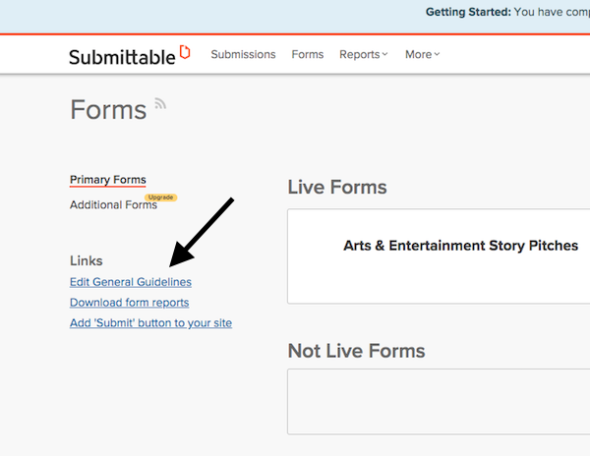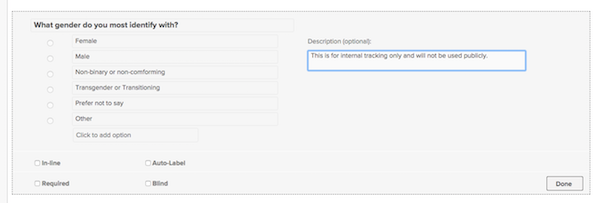Since 2010, Women in Literary Arts (VIDA) has worked tirelessly to draw attention to the gender imbalance in literary publications through painstaking research—and through sharing that research, known as the VIDA count, to change the landscape of the literary world into a better, more diverse, and more equitable place. More recently, VIDA has broadened their mission to include amplifying other historically-marginalized voices in publishing, including people of color, people with disabilities, and queer and trans writers.
Last week, VIDA released the results of their 2018 count. The nonprofit highlighted literary journals that have been making concerted efforts to publish a fair number of women and non-binary writers while calling out publications that continue to lag behind the times and publish significantly more male voices. The data shows that the industry is making progress, but it’s slow, and that some of the most celebrated journals and magazines of our time are still only coming through with 30-40 percent female-identified bylines.
We’re not here to call out lagging publications (at least specifically in this blog post ) that haven’t been able to hit the 50 percent mark, but we do want to let publications know how you can harness Submittable’s features to consistently improve your VIDA numbers—and fight the good fight not only against sexism, but also against racism, homophobia, ableism, and all that crappy stuff.
There are a lot of excuses publications give for gender imbalance in their Table of Contents, or for a screaming lack of diverse authors:
We simply aren’t seeing enough women/queer people/POC submit work!
The quality of our submissions from women/queer people/POC isn’t good enough!
We choose our our selections without considering the author’s identity, so we literally can’t help it when we publish a bunch of straight white men!
As a company who thinks a lot about how to make submission and application processes more fair and equitable, we can tell you that these are, indeed, simply excuses. Yes, they can seem like real problems, but what they point to is problems within your submission collection and review process. It’s not that women and non-binary people aren’t writing great stuff—it’s that your submission management platform and process are not set up to attract and accept their great stuff.
Below, we’ve shared a few tested, simple ways you can improve your submission processes to improve your VIDA count. Using Submittable makes all of these suggestions easy, but a good number of them can be accomplished even if you don’t use software. Some of them can even be accomplished in a few minutes.
Write welcoming guidelines that express your commitment
One of the very best ways to get something is to ask for it. If you want to publish more women, or more diverse voices, simply saying so in your guidelines helps a lot. At Submittable, we’re seeing more and more publications inviting diverse voices—and it just takes a moment to add encouragement to your site.
Here’s a great example from the guidelines of literary magazine Nat. Brut, voicing their wish for diversity while still making it clear that everyone is welcome to submit.
If you think that people should know they’re welcome to submit, consider how it feels to be part of a marginalized group, in which you are often subtly unwelcome in both public and private spaces. Making it explicit that you want to share marginalized voices can make all the difference.
Not sure how to update your guidelines in Submittable? It’s really easy. On the “Forms” page, select “Edit general guidelines” from the list on the left side of the page.

Track the demographics of your submitters
A common excuse for gender inequality is just: we didn’t know. But often, not knowing is easy to fix. Asking your submitters a few quick and easy questions on their submission form gives you all the knowledge and data you need to be informed. A simple question asking the gender of the submitter is all you need—just be sure to offer more than the binary “Male” and “Female” choices, such as “Non-binary,” “Non-conforming,” and “Transgender.” We also suggest including two more options: “Prefer not to answer” and “Other.”
Adding questions about gender, race, or sexual orientation to your submission form is easy. Simply add a Radio List (only one option may be selected) or Check List (more than one option may be selected) to the form and customize it.

Yes, submitters may be wary of why you’re asking them for personal information, but this, too, can be made clear either in your form description (see above) or in your guidelines. Alternating Current Press shows how easy it is to be upfront and transparent in its guidelines:

Diversify your review board
Having a diverse author list necessitates having a diverse review board. Literature is all about stories, and often we identify most with stories that are written by people who look and sound like us. Also—it simply might be more comfortable to read stories that we’re familiar with, or stories where we don’t look like the bad guys.
Diversifying your review board doesn’t necessarily mean kicking anyone off. It may just mean adding more people with more perspectives and backgrounds.
Having a larger review board can get unwieldy, we know, but using a submission platform like Submittable makes it easy, even if members of your review panel are remote. You can set up scoring systems, leave notes, or create multiple rounds of reviews.
Share your call for submissions widely
The more widely you share your call for submissions (or contest or fellowship or residency), the more diverse response you’ll receive, and the more submissions you’ll have to choose from. If you share narrowly, especially if you’re a small or new pub, your network is going to resemble you.
There are mountains of ways to share your call for submissions, but Submittable, with our audience of hundreds of thousands, can help you a lot! Here are the three big ways we like to offer assists to our clients when it comes to amplifying your signal:
- Use our Discover feature. Our discover marketplace is a searchable platform that helps our users find the Submittable opportunities that fit their with what they do. Appearing in Discover searches is as easy as adding tags to your forms. Here’s a step-by-step guide—you can set it up in just a few minutes.
- Let us promote you for free. If you use our platform, you can request promotion through a quick form (powered by Submittable, of course). Requests may be promoted on Facebook, Twitter, our blog, and Submishmash Weekly, our newsletter that is read by over 240,000 creatives every week.
- Tag us on social media. We love to retweet and share your calls for submissions with our large audience for free. We even promote contests or calls that don’t utilize Submittable. Just tag us so that we can find your posts easily. Follow us on Twitter, Facebook, and Instagram to get started.
- Use our marketing services. This is a paid option, but we have a crack team of writers and creators who offer marketing services like paid ads, email campaigns, and press releases to our clients.
Consider anonymous review and anonymous scoring/commenting
There have been tons of studies done about how unconscious gender bias can creep into decision-making, even among the most woke. Sadly, internalized sexism affects both men and women, and we’re all unconsciously misjudging women’s abilities all the time. One great way to guard against this is anonymous review (sometimes called blind review). Anonymous review helps ensure that a person’s work isn’t judged by what they look like, who they are, or what they’ve accomplished.
You can set up blind/anonymous review in Submittable in just a few minutes.
On the other side of the table, you can also make aspects of judging, scoring, and commenting anonymous. How can this help reduce gender bias and boost your VIDA count? By not allowing reviewers to know who is giving a piece a thumbs-up or thumbs-down, you prevent some members of the review team from influencing others. For example, if the editor-in-chief dislikes a piece, it might consciously or unconsciously impact or sway other voters. In this way, an editor’s bias could spread throughout a team, even if everyone’s intentions are great.
You can control anonymous judging and commenting by changing the permission levels of your team members.
Use our labels feature to organize and track submissions
In some cases, you may wish to know specific demographic information, either during or after your selection process—for example, if your issue is coming together, but you realize that a certain demographic isn’t being represented, or if you’re putting together a themed issue. Submittable’s auto-label feature allows you to automatically label submissions based on the responses that a submitter selects on the submission form, making it easy to sort any number of submissions in seconds.

Learn how to utilize auto labels in your Submittable account—just note that this feature is only available on certain plans. You can also apply labels manually based on submitter responses, then sort for submission with the desired label. The manual labeling feature is available on all plans.
Pull reports to track (and share) your numbers
A vital aspect of improving your VIDA count and diversifying the voices in your publication is understanding where you stand today and then tracking your progress as you make changes to your submission collection and review process. Submittable’s reporting features allow you to gain important insights into your process, especially if you collect information about your submitters in your forms and utilize labels. For example, you can explore how the ratio of men to women differs between the pool that submits to your publication and the pool that is ultimately published.

You may create a report about any of the fields your submitter fills out in their forms to you. You can further filter your report by label, submission status, submission rating, add-on payments, and form status. Finally you can view, save, and export your reports.
Reporting your own numbers internally can help your team understand how much progress you’ve made and what your next steps should be. Reporting your numbers publicly can add transparency to what you do and let everyone know that you’re working toward equity.
Moving toward a more equitable submission process
Gender bias is an insidious aspect of any selection process even for organizations that prioritize marginalized voices—and Submittable is constantly improving our platform so that bias can be minimized and mitigated. At the same time, we’re often delighted with the creative and ingenious ways that the publications have used the power of our software to make their submission processes more just.
The above suggestions are far from the only ways you can improve your submissions process so that it’s more accessible and fair. VIDA does the hard work of tracking where we are in the fight for equality through the VIDA count, but editors and reviewers are ultimately responsible for analyzing and repairing their system. Is your publication using a successful strategy that you think others could benefit from? We really want to hear about it.
Do you use Submittable, but aren’t quite sure how to utilize the above tools or strategies to improve your VIDA count? We can help—talk to your account manager or check out our help center.


